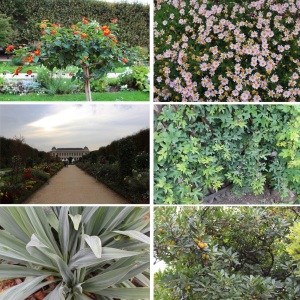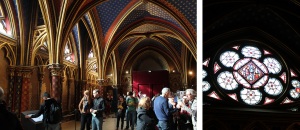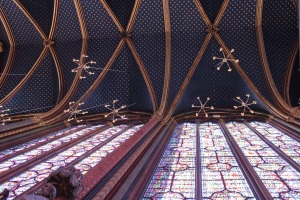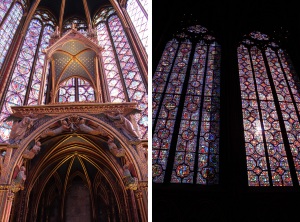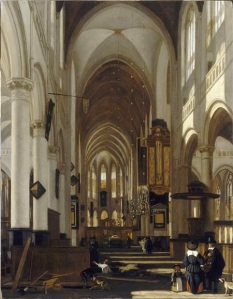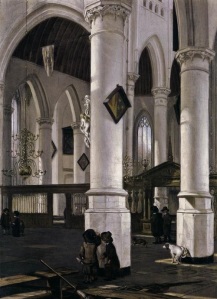The weather has abruptly turned chilly, and we’re heading into a long fall. This is something quite new to me. I’m used to the beginnings of fall followed by delightful indian summers and then uncompromising winter. Instead l’hexagonne seems to have long dreary cool falls. and a complete lack of turkey which makes Thanksgiving pretty lame. Also, no Thanksgiving. I’m missing apple picking and pumpkin-patch-traipsing, chardonnay and (Mother’s) homemade pie.
In an attempt to get over this flu I’ve taken to alternating going-out-days and sleeping-in-and-playing-video-games-all-day.. days. My small excursions, however, took me to the Louvre for small visits, gardens, concerts, churches and museums.
On one of the nicer days SO and I agreed to meet after work at Jardin des Plantes to take in the late-blooming flowers before they’re gone for the year. This garden is much more lax than the others, less strict and contrived and more free-spirited. We had a lovely picnic (or, pique-nique as they say) mixed in with the strolling daydreamers and running school children. We got to see lots of lovely late-bloomers like ageratum, skimmia, salvia spendens, morning glory and equestrium. That which wasn’t in bloom had equally lovely berries and pods. We also visited the alpine gardens to see some nice rocky shubby growers such as Phyla Canascens, who doesn’t seem to conform to any architectural garden design.
fuck the police
The Jardin des Plantes is definitely my favourite garden by far, and there are lots of other things to see here another day, such as the Grande Galerie de l’Évolution, the Mineralogy Museum, the Paleontology Museum, the Entomology Museum, the Menagerie (Zoo) and botanical school, winter garden, and Mexican and Australian hothouses. Though we did manage to peek through the gates of the Menagerie to catch some glimpses of wallabies, red pandas and some kind of cool green bird.
wallabies are kindof.. wierdos
We also went to check out Sainte-Chapelle, which is a Gothic church built by Saint Louis to house some thirty Passion relics. By the way, Sainte-Chapelle is celebrating its 800th year. It is also under renovation (understandably) so we were unable to see the famous rose window, however the unbelievable grandeur of this place was still quite literally jaw-dropping. The first area is the lower chapel with beautiful painted archways. “The vaults are decorated with fleur de lys, whereas the vault of the upper chapel is covered by golden stars: it’s an example of the recurrent alternation between royal and divine symbols”1.
“I have loved the stars too fondly to be fearful of the night”
The upper chapel is accessed by a very narrow spiral staircase. It contains fifteen enormous and very intricate stained glass windows, over two thirds of which are original dating to its 13th century creation. It’s Rayonnant Gothic style marked by its sense of weightlessness and strong vertical emphasis2 fills the room with bright and rich colours, glinting and floating around the room as the sun plays behind the clouds. The church is quite popular, with a very long line for admission and packed quite full. Visitors on the lower chapel are often shushed for their lack of respect in carrying on conversions. There is no need for a shushing attendant in the upper chapel though, the stained glass does that pretty well.
We also happen upon the Église Saint-Germain, which by the way is 1000 years old this year. It is in quite a state of disrepair, with a great amount of the paint and frescoes peeling away or so blackened with age they are hardly recognizable. However this small church has a quiet and unassuming atmosphere, especially in comparison with Sainte-Chapelle. It houses a number of lovely statues and paintings, however the loveliest is the Pietà, by Hippolyte Bonnardel.
Pietà (Hippolyte Bonnardel),1856
The popular image of the Pietà, such as by Michelangelo, often depicts Mother Mary as quite a bit larger than Jesus as there is inherent difficulty in depicting a grown man cradled in a woman’s lap. She is also often depicted very young as a symbol her purity. The Pietà by Bonnardel however is unmistakably realistic, the weight of Christ’s body unable to fit in her lap instead crumpled and draped over her knee. We are reminded of the Crucifixion by the nails arranged at the foot of the sculpture, and the crown which Mary removes. Her gaze is not at the heavens but at Christ. Her gaze, coupled with the realistic stature of both persons give the sculpture a realistic and personal feel. The representation is as much mother and child as it is religious symbolism; the reprieve his suffering captured in the moment she lifts his crown and gazes lovingly at his face conjures up the feeling we all get when our mothers cradle us and take away our pain. I don’t think you really have to be religious to like this sculpture, we all have had mothers.
I dont even..
We also got taken our for dinner and a show by SO’s supervisor who is visiting from back home. We dabbled through the Marais, lead along by our guide from memory, peeking in at notable and amusing places. We ended up,in a roundabout way, at Salle Gaveau to hear Muza Rubackyte play a piano concert, which was very nice.
Biking down to the Louvre its inevitable that I find something to ditch my bike early for.. like pop-up markets. Sometimes they’re full of veggies, sometimes charcuterie, this time it was overpriced organic honey and giant halva slabs.
We also took a very long and rainy trip to visit the Musée Français de la Carte à Jouer, which houses a number of amazing historical sets of playing cards and the original woodcuts and lithos to create them. They had a number of complete collections which you could illuminate on a timer, which I thought was a nice preservation idea. They had a huge number of sets some with stunning designs and many different types such as Italian, Tarot and of course the French design which back home is our standard. A few weeks ago I bought a pack of botanical drawing cards at Tuleries, and now I know why my face cards are Roi, Dame and Valet.
IL H O O Q
I’ve been making an attempt to visit the medieval and greek wings of the Louvre, not to eschew them in favour of my preferred medium. These wings tend to be somewhat less overrun with folks so its nicer to wander around. Plus I know very little about Medieval and Greek sculpture so I can just wander happily without having my mind blown every five seconds. Just every fifteen.
Something I’ve noticed about the Louvre is, it’s very very dusty. Especially at the end of the day, after 20,000 people have come through. Literally. It’s not surprising that amount of simple transference of filth is happening right in front of the artworks. Nonetheless, you think they would dust them every once and a while. A great number of works have glass panels in front of them to protect them, especially from folks who would like to slash them with a knife or throw acid at them, just to name a few examples. It it also protects them from accidental damage such as hot moist breath and greasy fingerprints. Seriously people you don’t have to get that up close and personal. Gross. That being said, it makes a sort of doubled-glazed system and I’ve noticed on more than one occasion the collection of dust and debris between the layers.
Church Interior (Emanuel de Witte), 1669
Despite the dust, the painting underneath is quite lovely. It features a church interior, whitewashed and somewhat unadorned in Dutch reformation style, though it is adorned with the comings and goings of everyday folks, dogs and gravediggers. What’s truly spectactular about this work is the light and the perpective point. Paintings of church interiors were popular during de Witte’s time, by artists like Houckgeest and van Vliet, though what sets de Witte apart from the others is the gentle play of light and shadow rather than hard perspective lines. “He avoided minute detail, a selling card for many of the Netherlands’ most successful artists, which might detract from the overall impact of the image. His approach to painting can be said to be tonal, rather than chiaroscural” 3. The vibrancy of the paint and and unique perspective point gives the viewer the sense of being in the space rather than looking in upon it.
Interior of Oude Kirk, Delft (de Witte), 1650
“He often incorporated the pulpit or other church furniture in his views of Delft or Amsterdam churches” 4. The incorporation of church adornments and the sometimes depravity of the activity in the church (see Oudekerk above) opens up some interesting questions on de Witte’s motivation : was he merely interested in accurate depiction of light and shadow? Does his depictions of adornments in Protestant churches hint at at an unpopular religious alignment? Is de Witte commenting on society from the activities taking place in the scenes? Unfortunately there is very little known about his life. “Although it is believed that De Witte initially aspired to become a history and portrait painter, in about 1650 he abruptly changed artistic course and began to produce close-up interior views of the two most venerable monuments of historic Delft, the Oude and the Nieuwe Kerk” 5. He eventually became an indentured man due to the criminal activities of his daughter and second wife and after incurring some substantial gambling debts hanged himself from a bridge.
here, something cheery.
1 http://architecture.relig.free.fr/chapelle_en.htm


